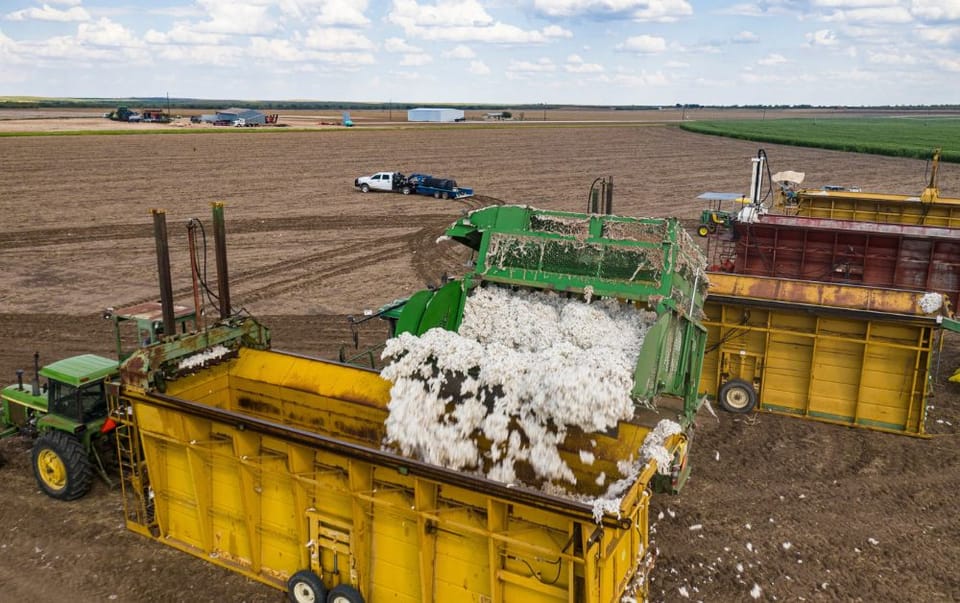Cotton Prices Soften as Supply Concerns Ease and Chinese Demand Uncertain

Sign up for Ag Commodities Focus: Stay ahead of the curve on ag commodities trends.
Cotton prices have retreated in recent weeks, reflecting an easing of concerns about exportable supplies and uncertainty regarding Chinese import demand in the upcoming 2024/25 marketing year, according to a report by Cotton Incorporated.
Benchmark prices across major markets have experienced a decline over the past month. The July NY/ICE futures contract fell from 93 to 77 cents per pound, while the December contract, reflecting post-harvest price expectations, dropped from 84 to 75 cents per pound.
"The steeper drop in July prices narrowed the separation between values for 2023/24 and 2024/25 delivery to just a couple cents," the report notes. "At the end of February, the gap was 15 cents/lb."
The USDA's May projections for the 2024/25 marketing year point towards increased global production and mill use. Production is forecast to reach 119 million bales, up from an estimated 113.6 million bales in 2023/24. Mill use is also expected to rise to 116.9 million bales, compared to 113.4 million bales in the current marketing year.
"The outlook for 2024/25 suggests a crop year with more cotton available for export, while there could be a simultaneous pullback in Chinese import demand," Cotton Incorporated reports.
The largest production increase is anticipated in the United States, where the crop is projected to grow by 3.9 million bales to reach 16 million bales. Brazil is also expected to see a substantial increase in output, reaching a record 16.7 million bales.
However, uncertainty lingers over the US harvest due to the concentration of planted acreage in drought-prone West Texas. Recent rains have improved prospects for successful germination, but the ultimate impact on yield and production remains unclear.
Meanwhile, Chinese import demand, a key driver of cotton prices in recent years, is expected to moderate in the 2024/25 marketing year. China's substantial purchases in 2023/24, largely attributed to replenishing its reserve system, have created a stockpile that could potentially offset import needs in the coming year.
"It remains to be seen how much fiber accumulated in 2023/24 will be leveraged against imports in 2024/25, but the potential for China to pull back on imports at the same time that exportable supplies are expected to rise may weigh on the market," the report concludes.
The confluence of increased exportable supplies and potential moderation in Chinese demand is expected to exert downward pressure on cotton prices in the coming months.